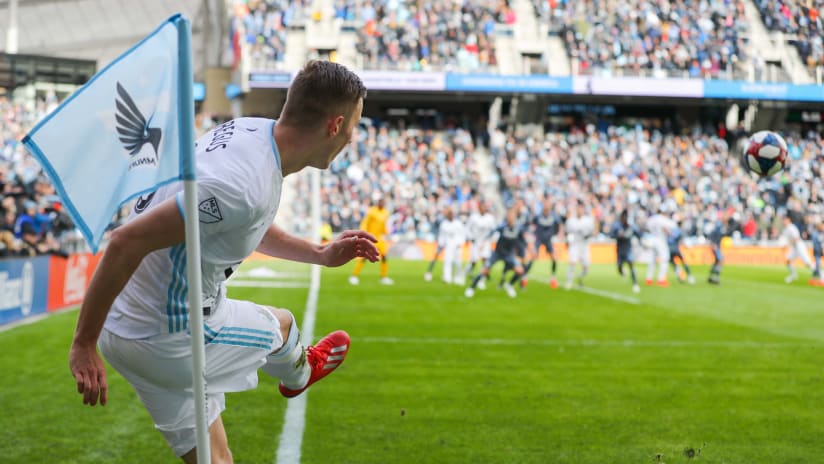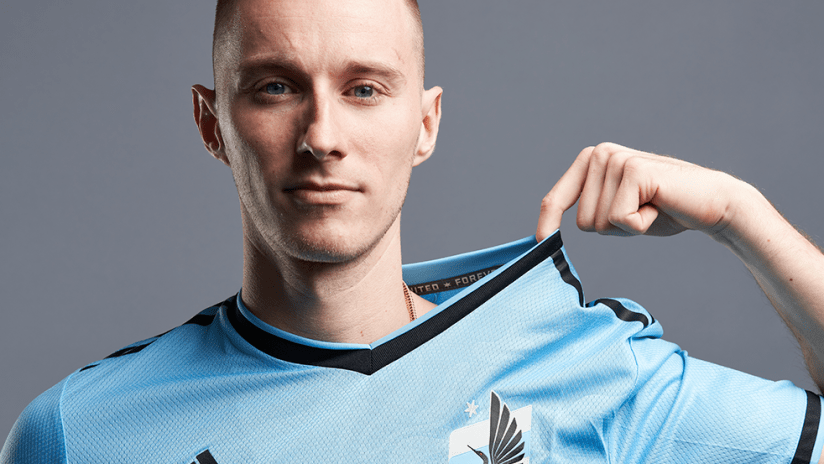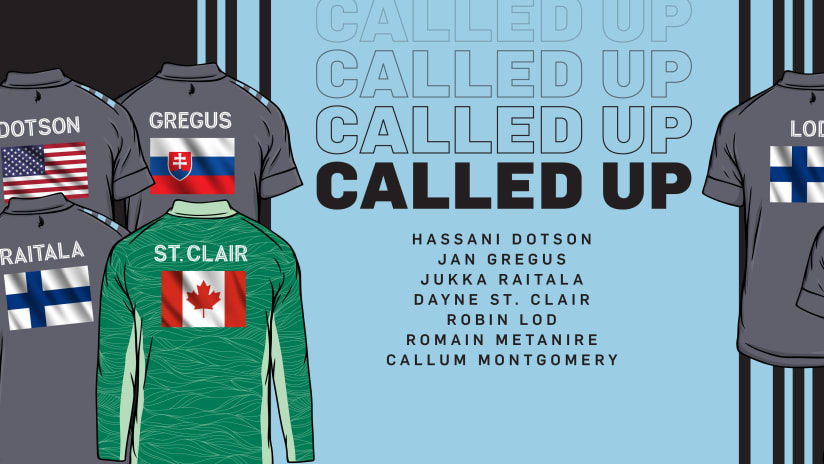Set pieces are those moments in a soccer game when the action’s relentless forward momentum holds up just long enough to create something dramatically different from the bulk of the game. A free kick or corner kick gives each team the time and space to set something up, briefly turning soccer from free-flowing kinetic opportunism into a chess match. If you’ve been watching Minnesota United in the last few games, you might have noticed something new in the team’s corner kicks: midfielder Jan Gregus has been taking the ones from the right corner with his non-dominant left foot.
Gregus’ ability on set pieces was a major reason for bringing him in as the team’s third Designated Player this past offseason. Having scored off a direct free kick and assisted several times from assorted set pieces, the Slovakian international has certainly justified the club’s faith in him, but this new wrinkle that allows him to hit in-swinging crosses from either side first came up during the team’s game against Real Salt Lake for a very specific reason.
“That was particular against Salt Lake: we knew that he [Nick Rimando] doesn’t like it and actually, we scored from one,” said Gregus. “There was another chance from the right side with the left that was a little bit of chaos and we should’ve scored, maybe. Maybe it’s a talk with the defenders and I can ask them what is better for them and we can talk during the game as well. So it can be unexpected. It’s obviously good for us that the team doesn’t know if we go in or out [in-swinging or out-swinging], I can do both. It can be an advantage.”
In case you’re not up on the ins and outs of which foot you use for a corner kick, here’s the abridged version. From the right corner, a right-footed kick will swing away from the goal while a left-footed kick will swing in towards the goal. Each has its advantages.
“[An in-swinger] is kind of more dangerous, when for example, the goalkeeper doesn’t like to go out and take the ball,” said Gregus. “That didn’t happen last game [against Vancouver] because [Maxime Crepeau] took every single one. I think when somebody stays on the goalkeeper and makes life hard for him, it’s a pretty good chance that it’s coming [to him]. An out-swinger, maybe, gives more power to the header because when the ball goes against your head, it’s more powerful.”
There are other levels to it as well. You might be able to get a more powerful header on an out-swinger, but there’s a greater chance of an in-swinger deflecting into the goal since it’s already heading that direction. But what if the other team gets to it first? An in-swinger is easier to clear farther to spring the counterattack. Like just about everything in soccer, it’s a calculated risk. On the one hand, risk opens up opportunity. On the other, it can make you vulnerable.
Perhaps, though, the ability to switch things up in a moment for something as heavily tactical as a corner kick is less about weighing pros and cons than it is about staying unpredictable for unpredictability’s sake. It’s why coaching staffs jealously guard lineup decisions until the very last moment or throw smokescreens about who’s playing where when they’re announced. Margins on the pitch are slim, and the slightest doubt can tip the balance in a game. Gregus left open the option of even taking left-sided free kicks with his left foot to create out-swinging corners should the situation call for it. And just because he does it one way in the first half, don’t bet on him doing it the same way in the second half.
“You can change it in the game,” he said. “Everything happens so quickly in the game. It can help in a split second and I can say, we go out or in. You never know in football.”





